I’ve been waiting for migrating American Pipits to show up in good numbers this fall and yesterday morning they finally came through in spades.
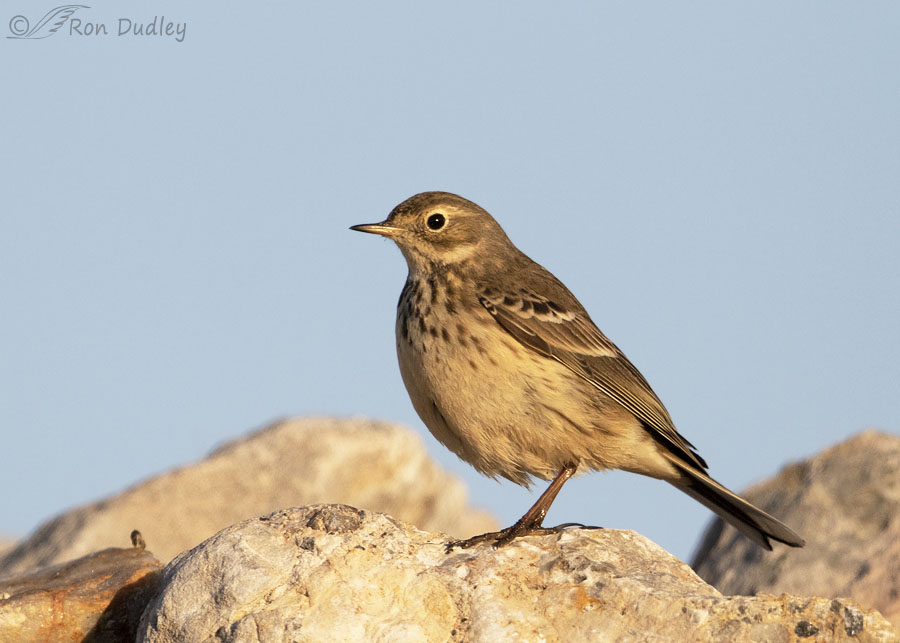
Typical of pipits around here at least they were foraging for food on the flats but small flocks of them periodically and regularly flew in to land on a large rockpile where they didn’t seem interested in food at all. They may have been warming in the morning sun but I didn’t see a lot of evidence of that. I think they just like piles of rocks and dirt.
I got a lot of varying backgrounds in my photos of them including blue sky…
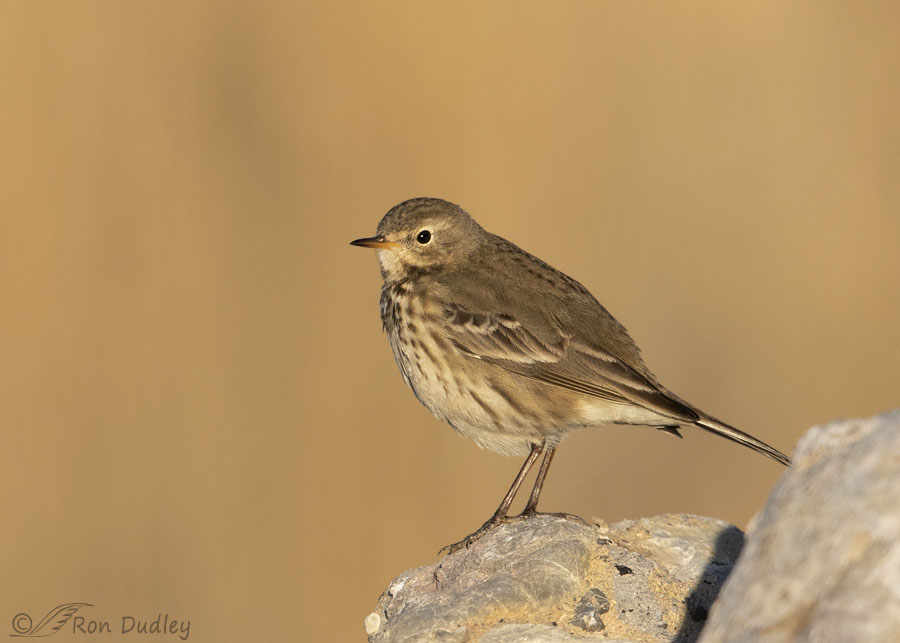
and dead vegetation in warm light. About the only type of background I didn’t get was anything green and alive.
As usual one of my goals was takeoff and flight shots but this bird kept the end of its tail hidden…
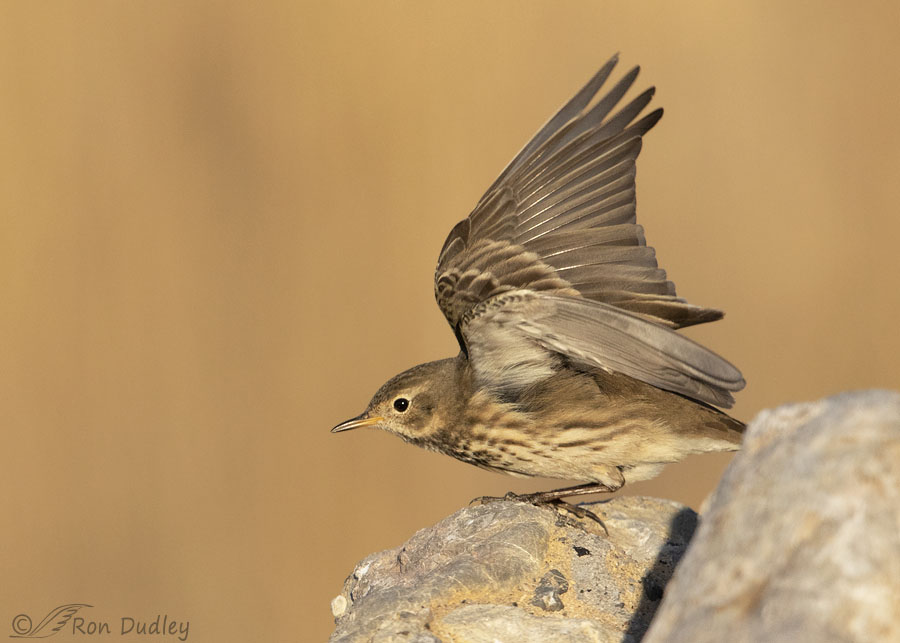
even when it almost took off. This was a false start and the pipit didn’t actually take off until later. Yes, I missed that shot.
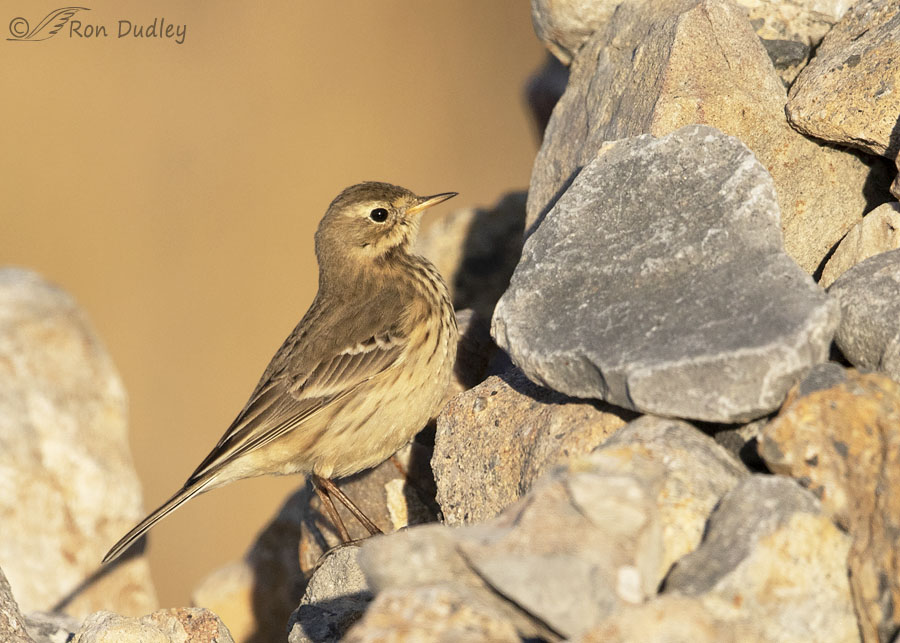
Kind of an unusual composition with the bird facing directly into a pile of rocks but it’s unusual enough that I actually like it. I think.
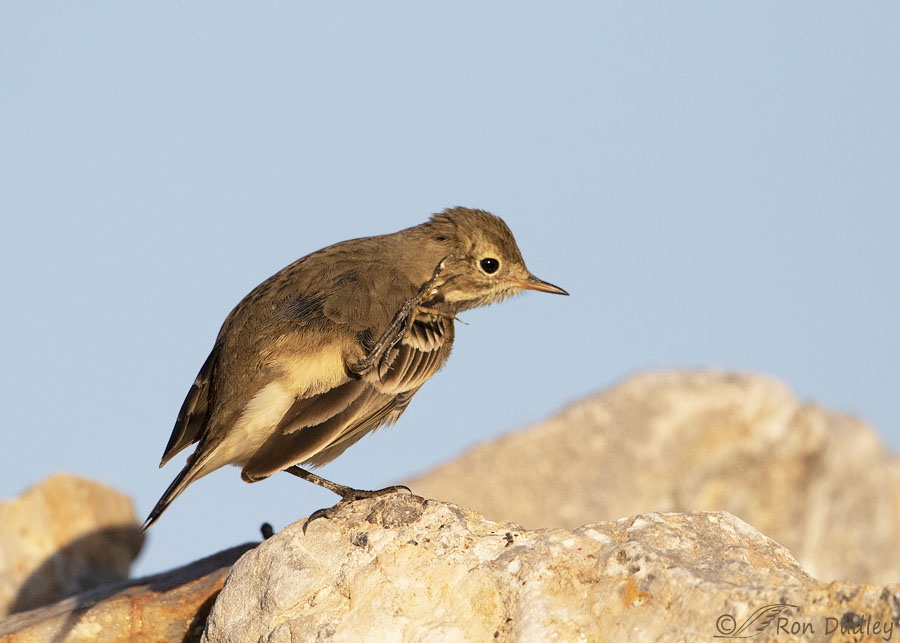
When birds scratch their heads they nearly always close their eyes so it’s unheard of for me to post scratching shots. When this pipit forgot to close them it caught my attention.
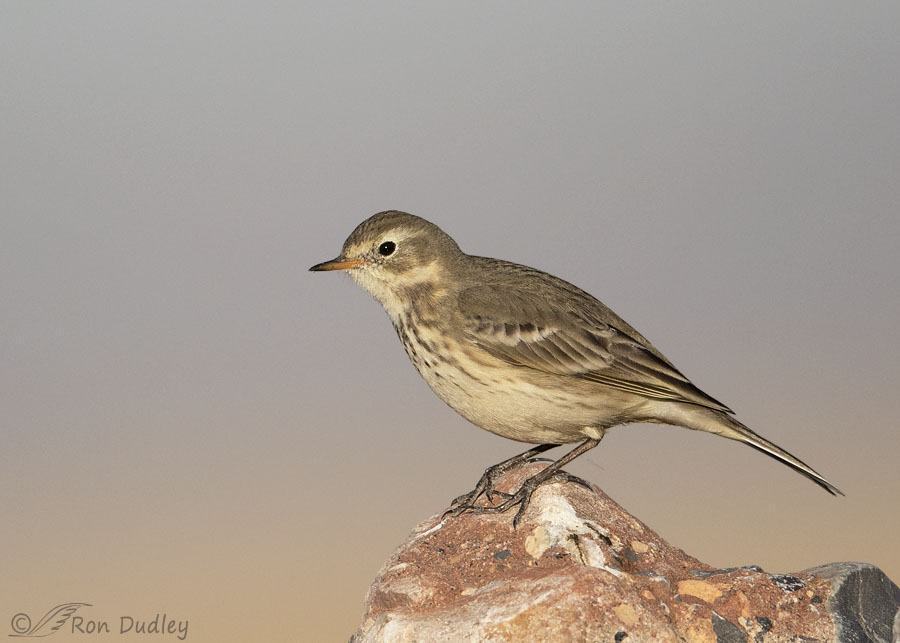
American Pipits are nondescript and inconspicuous little birds with a soft call so many folks barely notice them. But on this rockpile I was often able to photograph them with clean backgrounds which helps to make them stand out. This one seemed to use the rock as a pedestal and gave me…
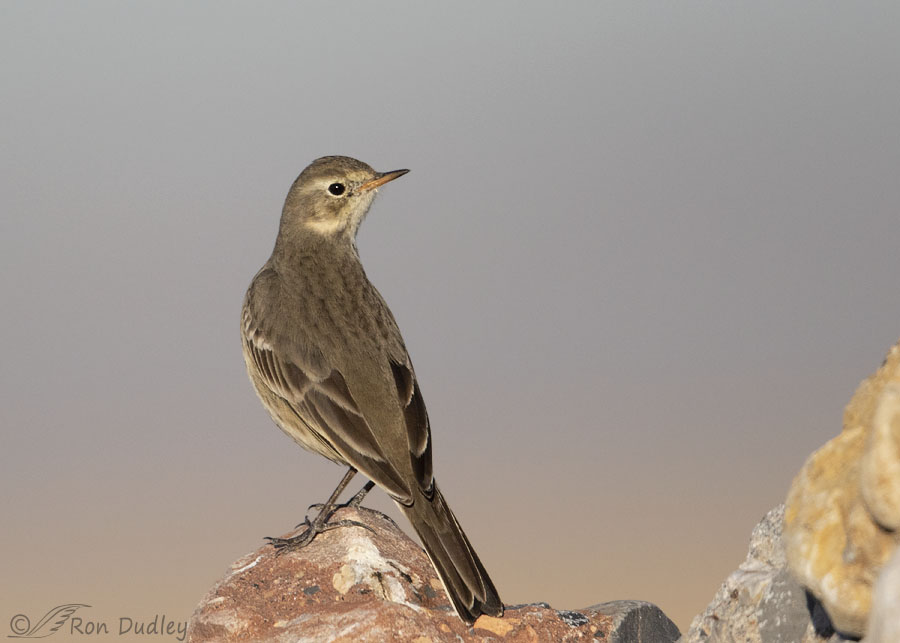
several nice poses while it was perched there.
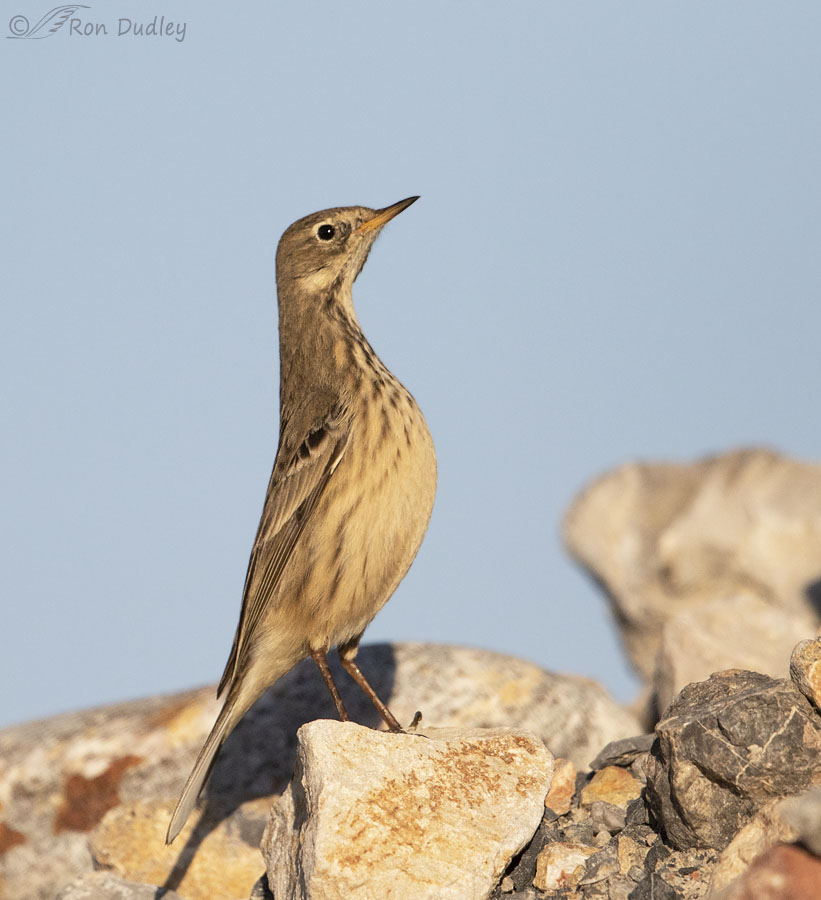
There were often multiple pipits perched on the rockpile at the same time and they were quite prone to squabbling. As a result they always seemed to be concerned about where the other birds were on the pile so they often stretched vertically like this so they could see other pipits over nearby rocks.
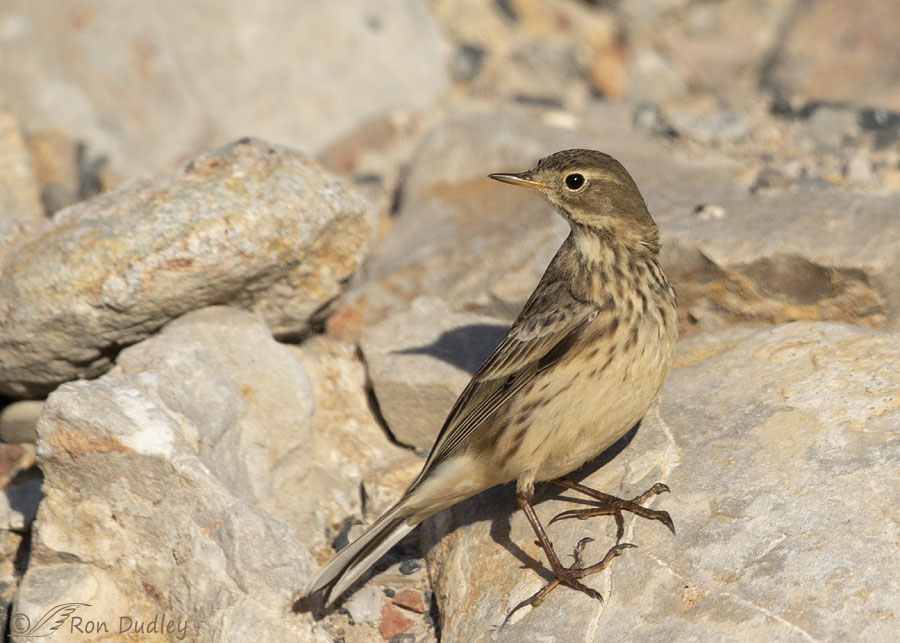
Their cryptic coloration made them very difficult for me to spot on the similarly colored rocks. Often I didn’t even know they were there until they flew off.
As we can see in this individual the nail (claw) of the rear toe or hallux of this species is highly elongated. Some were even longer than this.
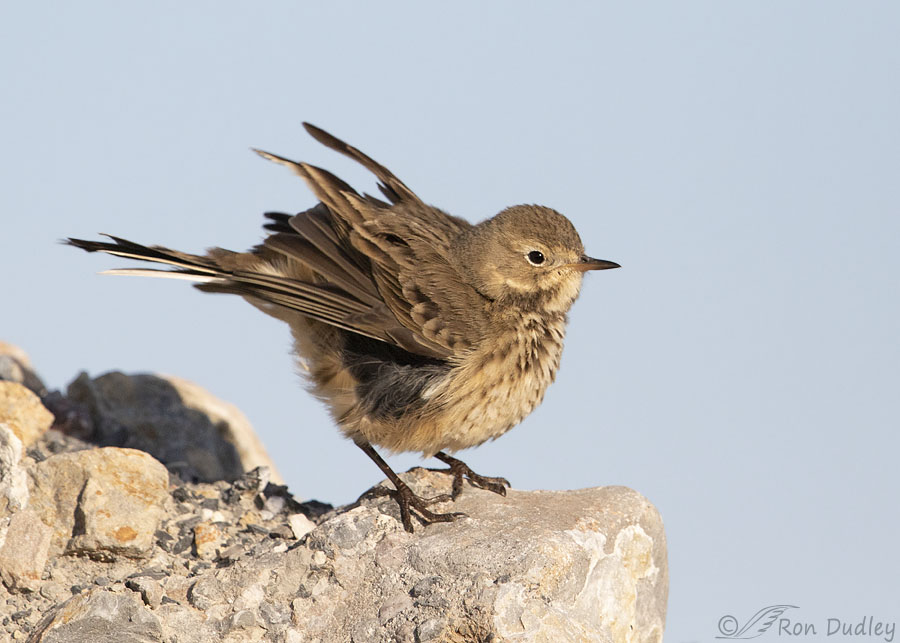
I caught this one in the middle of a rouse.
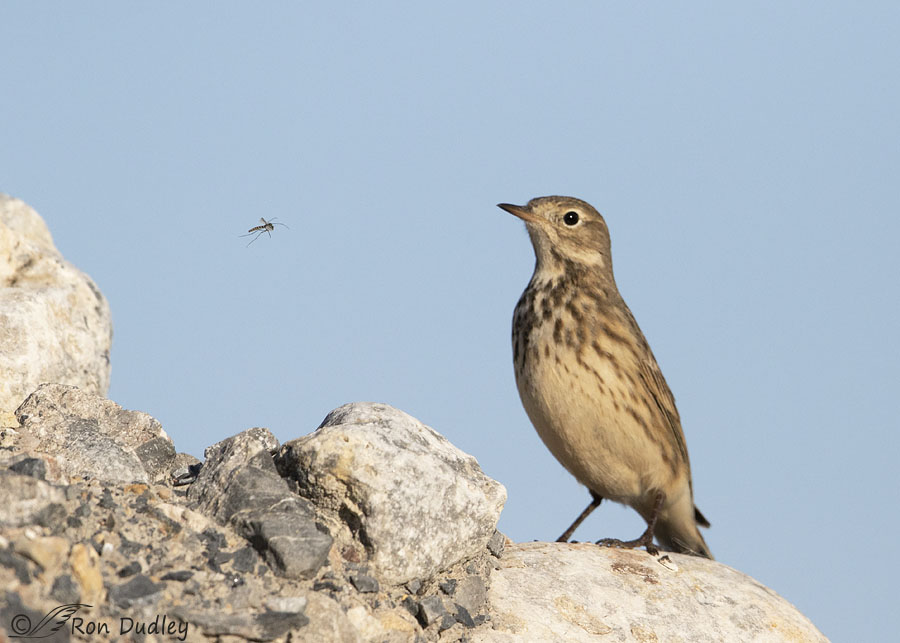
Like many songbirds this species is largely insectivorous in the summer but switches to eating seeds for most of the rest of the year. Surprisingly even when it was as cold as it was yesterday morning there were a variety of insects flying around including this presumed mosquito but the pipits seemed to ignore them.
Here the insect is actually sharper than the bird but I’m fine with that because the mosquito caught my interest so I wanted a closer look at it. I got good looks at many of the mosquitoes that morning because there were a bunch of them flying around inside my pickup and biting me as I was photographing the pipits.
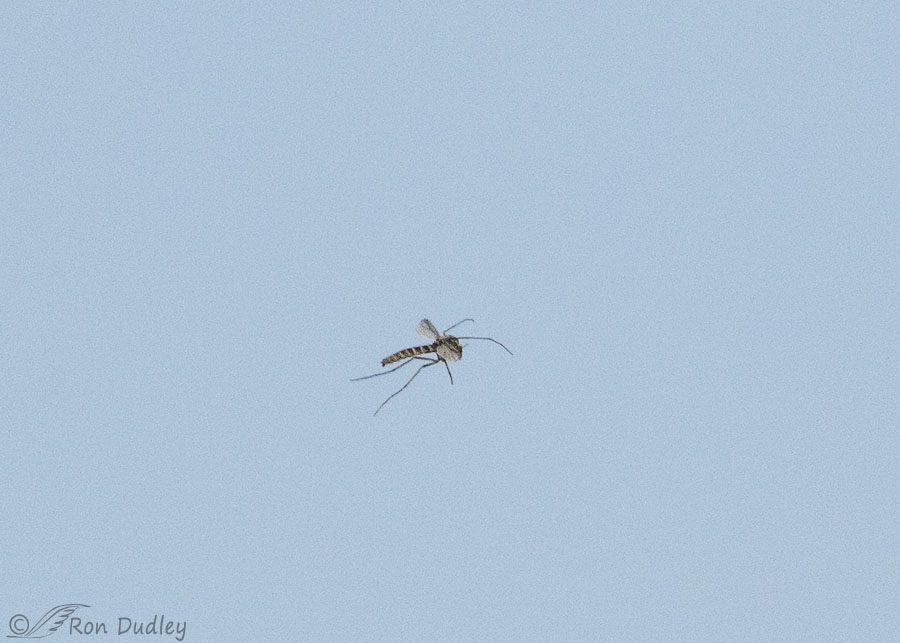
But this one looks different from the ones that were biting me. In Utah we have three predominant mosquito species but this one appears to be slightly larger, some of the appendages seem a little too long and I don’t recognize those stripes on the abdomen.
Perhaps it isn’t a mosquito at all. Maybe it’s a type of crane fly (mosquito hawk) but it’s much smaller than those I usually see. I dunno, I’m no entomologist.
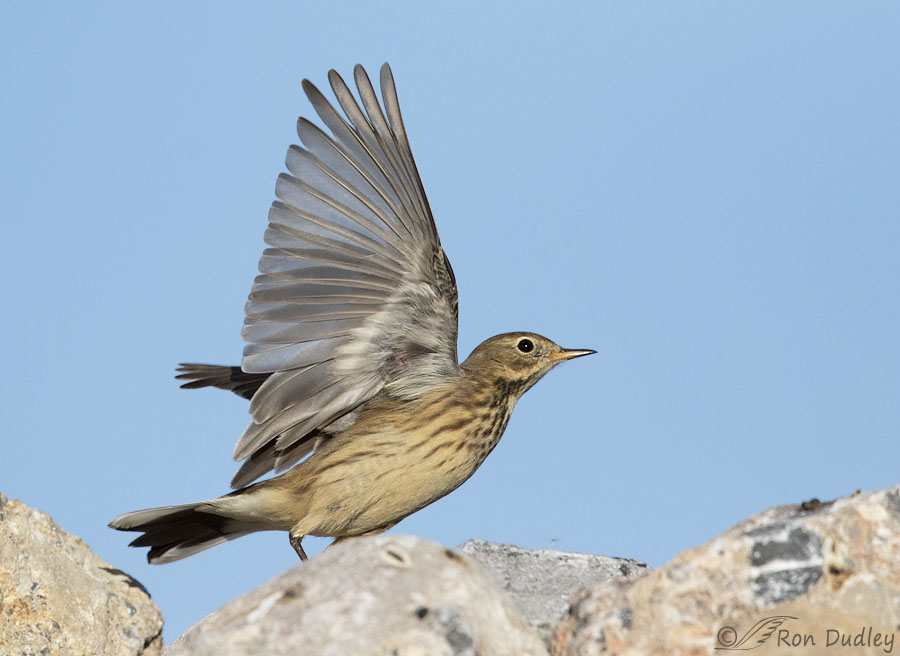
My attempts at takeoff and flight shots I like were stymied all morning. I often had to choose between 5 or 6 birds to aim my lens at and I usually chose the wrong one. Something always seemed to go wrong. I would have been happy with this one if the legs of the bird weren’t hidden and the shooting angle wasn’t quite so steep.
But I shouldn’t and won’t complain. The last three mornings I’d been out shooting I was mostly bird-skunked but yesterday morning I had oodles of pipits and took almost 1200 shots of them in 55 minutes.
So the only thing I’ll bellyache about is all the image culling that awaits me.
Ron
Note: I misspelled “Pipit” in the introductory sentence in the email that went out to my subscribers. I fixed it in my post but it was too late for the email. Hate it when I do that!


Fantastic series Ron!
Charlotte
Pipits, from fluffy to, shall we say, svelte? A good introduction for me to this bird (not so much the skeeters):). The last photo is typically you getting an impeccably timed shot.
“The last photo is typically you getting an impeccably timed shot.”
I don’t know how “typical” it is for me but I’m glad you appreciate the difficulty, Lyle. As you know I try hard and often for takeoff shots but dang it was frustrating yesterday! At least I kept the bird in frame and had the shutter speed to freeze the action.
Thanks for bringing the pipit world into focus. I think the shot with the mosquito and the pipit is pretty neat. Love those shots when they’re on that pretty rock with that gorgeous backdrop.
Cheers to you as its about that time here on the west coast.
Thanks for appreciating pipits, Dave. Not everyone does. They get very little attention from photographers and from bird photography fans.
Love the warm light, the varied backgrounds, the delightful Pipits, and the scratch shot! Hope you’re not doing too much scratching right now. I’m a biting insect magnet — I got bitten up every time I had to take the foster dogs out for a potty. I’m even leaving the wasp nest by my door because they’re munching on the mosquitos (and seem mostly indifferent to me after a couple of flybys).
Hope you’re not doing too much scratching right now. I’m a biting insect magnet — I got bitten up every time I had to take the foster dogs out for a potty. I’m even leaving the wasp nest by my door because they’re munching on the mosquitos (and seem mostly indifferent to me after a couple of flybys).
You’re brave to leave the wasp nest there, Marty. Hope you don’t regret it. Thank you.
Ron,
Dang mosquitos! I have bites all over from similar trips and also a recent trip to Southern Utah for a photo workshop in the red rocks.
About “the bird facing directly into a pile of rocks.” I like this shot a lot because that is how I feel many days: like I’m looking at a “pile of rocks!” Life is like that sometimes.
Thanks for the shots no matter how you spell it!
Stephen
Good point about looking into a pile of rocks, Stephen. I have days like that too.
Wonderful series of poses. I like pipits too. I will have to get out over the coarse of the next few days, today was cloudy so I took time to sleep in.
Yeah, today sucks and it’s looking like it’ll only get worse for a while. Thanks, April.
Another charmer I will not see for myself. Thank you. I particularly liked the one in full rouse.
Sigh on the ‘squitoes. They love me and my partner uses me as insect repellent for himself knowing that if I am with him I will be bitten and he will not.
Thanks, EC. I should invite you along on some of my shooting excursions. Do biting gnats have the same fondness for you? If so I’d pay you double…
How I would LOVE to come on a shooting expedition with you. And biting anything likes me. Flies, ‘squitoes, ants… I am a treat for leeches too.
They are usually so inconspicuous and retiring. It is a real treat to see them out in the open.
I agree on both counts, Ken.
Very interesting Ron. I have never knowingly seen an American Pipit. Quite possible that I have seen them during their transitory times here, but just thought they were one of the many sparrow species and ignored them. Now I will start taking photos of all the “sparrow” looking birds until I get them. Actually very pretty birds and I very much like these photos of them in the rocks. That last shot with the extended wings is especially nice.
“thought they were one of the many sparrow species and ignored them”
Early on in my bird photography I was guilty of that too, Everett. They’re easy to miss but their winter range does include your area.
Kinda looks like a tiger mosquito to me. Or what I call tiger mosquitoes. The Pipits are such cuties.
Arwen, I looked at some photos of tiger mosquitoes last night but didn’t think they fit this one very well. But what do I know…
Nice! VERY good series on tha pipits…..
VERY good series on tha pipits…..  They are a beautiful little bird and, for the most part, cooperated even when blending beautifully into their background. That lonnnnng toe is impressive – must not tend to get hung up on things. Love the translucence of the wing on the last shot..
They are a beautiful little bird and, for the most part, cooperated even when blending beautifully into their background. That lonnnnng toe is impressive – must not tend to get hung up on things. Love the translucence of the wing on the last shot.. 
Judy, I think of that long toe when they’re scratching, especially near their eyes. Must be like scratching with a bundle of needles that could do a lot of damage if it isn’t done very carefully…
Does the government or any organization keep track of how many species visit or live there year around and the population of these species?
Steven, A number of organizations do that as best they can but birds being birds it’s challenging to get accurate numbers.